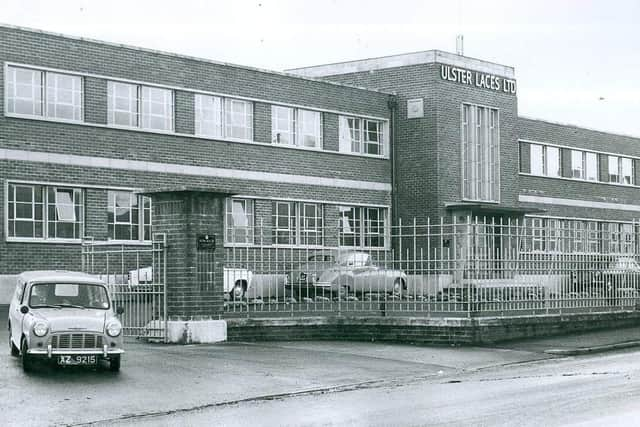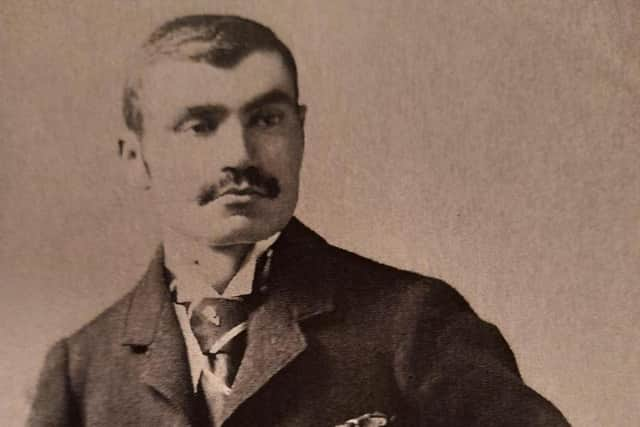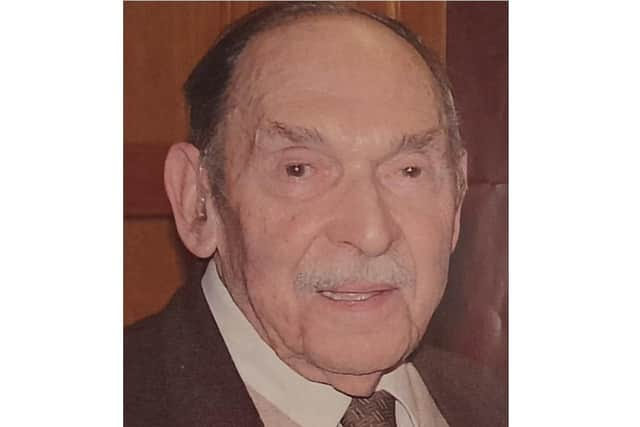Eastern European Jews who escaped wars and set up businesses in Portadown and Lurgan are remembered in a new online map
and live on Freeview channel 276
A new online map outlining Northern Ireland’s Jewish community has been published for the first time.
Portadown and Lurgan feature in a recently-launched heritage map, published by the Belfast Jewish Heritage project.
Advertisement
Hide AdAdvertisement
Hide AdThe map highlights over 60 locations across NI with a Jewish story to tell.


Portadown features through the town’s association with the Bloch family. The map tells the story of the family’s escape from Poland on the eve of World War II and their arrival in Portadown where Kasriel Bloch and his brother-in-law Jack Shanik, established a new factory, Ulster Laces.
Kasriel’s son, George Bloch recalled: “Unknowingly, we were on the last transcontinental train from Warsaw through Berlin to Belgium. I can clearly remember the journey. A sleepy frontier post on the Polish side. Once in Germany mile after mile of railway trucks with troops and armoured vehicles.”
At its height Ulster Laces employed nearly 750 workers at three different sites - a new factory on the Loughgall Road was opened in 1954 and later extended so that all the production could be concentrated there. Over a million cardigans a year were produced for Marks & Spencer.
Advertisement
Hide AdAdvertisement
Hide AdThe factory was forced to close in 1984 due to foreign competition.


The NI Jewish Heritage map also tells the story of the Lurgan Hebrew congregation which had its place of worship at 49 North St. The congregation dates from 1903. About 40 Jews were living in Lurgan at that time.
The first services were held at the home of the Hamills on Union Street. Worshippers came from as far away as Banbridge, Newry and Enniskillen to attend the services.
The dominant figure in the Lurgan Hebrew congregation was Joseph Herbert who came from Tukum in Latvia. Joseph set up shop at 16-18 North Street selling furniture and household goods. Three generations of the family traded from there for over a century.
Advertisement
Hide AdAdvertisement
Hide AdIn 1904 the members of the community clubbed together to buy a Sepher Torah – the scroll of the law, which contains the first five books of the Bible. Hand written in Hebrew on special parchment, a portion from the Sepher Torah was read each Sabbath at the North Street prayer room.


Levin Road in Lurgan is said to have been named after Robert Levin, who in 1901 was a 20-year-old draper boarding with two other Jewish men in the town. He became well known as a trade union organiser for the Lurgan weavers and is remembered for his work to alleviate poverty.
The Lurgan Hebrew congregation folded in 1926, shortly after the death of Joseph Herbert.
One of the last Jewish families to live in Lurgan was the Matthews family of Union Street. They began as door to door salesmen. The three late brothers Benny, Isaac and Elliot are still well remembered in the town. Author Linda Fullerton wrote about the Matthew family in her book A Suitcase of Memories.
Advertisement
Hide AdAdvertisement
Hide AdThe interactive map helps users to identify key places relevant to the heritage of NI’s Jews over the last 150 years. Users can select a location to reveal historic information, photographs and videos.
The project director, Steven Jaffe, says: “The Jewish community in NI never numbered more than 1,500. But people will be amazed by the variety and depth of the Jewish experience.”
Stories include the Belfast-born Jew who won an Oscar and the future President of Israel, Chaim Herzog, whose father was rabbi in Belfast.
Steven says: “Many people aren’t even aware of the existence of NI’s small Jewish community because of the dominant Protestant and Catholic traditions. This map will change perceptions. We hope it will be the springboard to future initiatives such as specially themed tours and exhibitions.”
Advertisement
Hide AdAdvertisement
Hide AdThe map project was one of 39 community projects to receive grants from the Shared History Fund which was set up to mark Northern Ireland’s centenary year. The fund is managed by the Heritage Fund.
Mukesh Sharma, Northern Ireland Committee Chair said “The Heritage Fund is delighted to support The Belfast Jewish Heritage project through the Shared History Fund. We are delivering the Shared History Fund on behalf of the NI Office to help a wide range of groups mark the Centenary of NI in a thoughtful, inclusive and engaging way. This project is one of 39 projects funded through the programme and will help a wide range of people explore the key events and moments in Northern Ireland’s history.”
The map is at www.belfastjewishheritage.org/
-
-
Comment Guidelines
National World encourages reader discussion on our stories. User feedback, insights and back-and-forth exchanges add a rich layer of context to reporting. Please review our Community Guidelines before commenting.